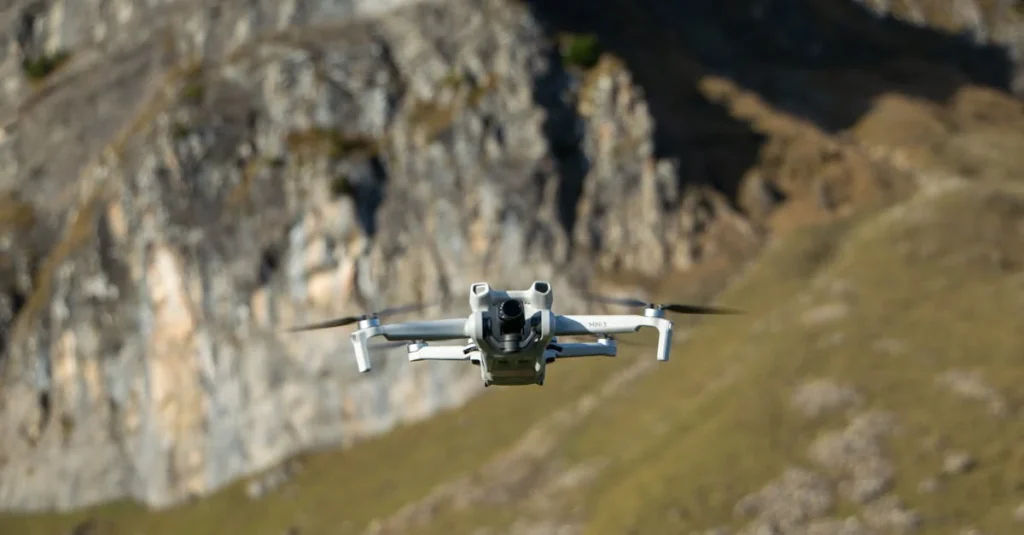When we think of sports, images of athletes sprinting across fields or courts often come to mind. But in today’s tech-driven world, the definition of a sport is expanding, and robotics is emerging as a contender. With competitions like FIRST Robotics and BattleBots gaining popularity, it’s clear that the blend of engineering and competition is capturing the imagination of many.
I find the debate over whether robotics qualifies as a sport fascinating. On one hand, it involves teamwork, strategy, and skill—hallmarks of traditional sports. On the other, it challenges our conventional notions of physical exertion and athleticism. As robotics competitions continue to rise in prominence, they push the boundaries of what we consider a sport, inviting us to rethink our perceptions and embrace a future where technology and competition go hand in hand.
Key Takeaways
- Robotics competitions like FIRST Robotics and BattleBots are gaining momentum, challenging traditional perceptions of sports by blending engineering skills with competitive elements.
- Teamwork, strategy, and skill play a crucial role in robotics, aligning it with traditional sports’ demands despite the limited physical exertion involved.
- The inclusivity of robotics competitions encourages collaboration and creativity, mirroring the team dynamics found in conventional sports.
- Robotics contests, governed by structured rules similar to conventional sports, focus on mental agility and technical expertise, promoting a competitive spirit.
- While some argue that the lack of physical activity differentiates robotics from traditional sports, its emphasis on strategy and skill parallels intellectual competitive activities like chess.
- Robotics competitions contribute to developing technical skills and fostering innovation among participants, preparing them for careers in science and technology fields.
Is Robotics A Sport
Recognizing robotics as a sport requires examining its competitive nature. Robotics competitions, like FIRST Robotics, demand teamwork, strategic planning, and skillful execution. These events, similar to traditional sports, create an environment where participants face challenges, solve problems, and optimize strategies for victory.
Acknowledging the skillset needed in robotics competitions, it’s essential to view human effort through a broader lens. While lacking physical exertion, these events focus on mental dexterity and technical skill. Participants design, program, and operate robots, honed through rigorous practice and innovation, comparable to athletic training.
One compelling aspect of robotics as a sport is its inclusivity. These contests welcome diverse participants, encouraging collaboration and creativity. From drafting blueprints to final execution, the collaborative nature of these events mirrors team dynamics seen in conventional sports.
As robotics competitions expand globally, their cultural impact grows. National and international tournaments engage audiences, creating a competitive spectacle. This cultural integration reinforces the perspective of robotics as a sport, blending technical prowess with entertainment.
The Evolution of Robotics Competitions
The journey of robotics from a casual hobby to a global competitive arena is remarkable. These competitions now command attention and respect, as they involve serious strategy and skill.
From Hobby to Competition
Initially, robotics intrigued hobbyists who enjoyed creating simple machines. As technology advanced, enthusiasm grew, leading to informal contests among creators. By the late 1990s, organized events like FIRST Robotics emerged. They introduced structured competitions where teams designed, built, and programmed robots to achieve specific goals. These events shifted robotics from a pastime to a serious competitive field, akin to traditional sports.
Popular Robotics Competitions Worldwide
Robotics competitions have gained international popularity, drawing participants and spectators from around the globe. Notable events include the FIRST Robotics Competition (FRC), which combines science and sport through intense, themed challenges. BattleBots, with its combat-style format, showcases engineering creativity and strategic combat. RoboCup pushes the boundaries by promoting research in AI and robotics, with its goal of creating autonomous robots that can play soccer. Each competition offers a unique platform for showcasing technical excellence and competitive spirit, establishing robotics as a formidable modern sport.
Criteria for Classifying a Sport
Recognizing robotics as a sport involves evaluating it against established criteria typical for traditional sports. These criteria include physical and mental aspects, along with a competitive nature governed by specific rules.
Physical and Mental Aspects
Sports generally require a combination of physical exertion and mental acuity. Robotics primarily emphasizes mental skills, like strategic planning and problem-solving. Participants design, build, and program robots, demanding technical knowledge and cognitive agility. While physical exertion is minimal, the coordination involved in assembling and operating complex machines parallels the precision needed in traditional sports.
Competitive Nature and Rules
A sport’s competitive nature relies on structured contests with defined rules. Robotics competitions, such as FIRST Robotics, employ a formal set of regulations ensuring fair play. Participants strategize and adapt to dynamic environments, akin to conventional sports settings. These competitions judge skills like engineering and teamwork, fostering a competitive spirit that rivals classic team sports.
Arguments Supporting Robotics as a Sport
Robotics competitions, akin to traditional sports, demand a unique fusion of skill, strategy, teamwork, and collaboration. These elements support the classification of robotics as a sport by highlighting its competitive and cooperative nature.
Skill and Strategy Involved
Robotics involves a complex set of skills and strategic thinking. Participants design, build, and program their robots, requiring knowledge in areas such as engineering, computer science, and mathematics. Competitors must anticipate opponents’ moves, adapt tactics, and optimize their robots’ performance to succeed in contests. This level of strategic engagement parallels the cognitive demands seen in sports like chess or cycling, where planning and adaptability are crucial.
Teamwork and Collaboration
Teamwork serves as a cornerstone of robotics competitions. Participants often work in diverse teams, combining different skill sets and perspectives to create effective solutions. Collaboration fosters a dynamic environment in which team members communicate actively and solve problems collectively, mirroring the team dynamics found in football or basketball. This cooperative spirit not only enhances performance but also strengthens the argument for robotics as a sport, emphasizing its alignment with traditional team-based sports.
Counterarguments: Why Robotics May Not Be Considered a Sport
Some argue that despite its competitive elements, robotics doesn’t fit the traditional definition of a sport.
Lack of Physical Activity
While traditional sports demand physical exertion, robotics centers on mental and technical expertise. Participants devote time to programming, engineering, and strategic planning, not physical training. Activities rely heavily on cognitive skills rather than athletic ability, which some believe exclude robotics from being classified as a sport.
Different from Traditional Sports
Robotics differs from conventional sports in structure and purpose. Most traditional sports involve physical contact or interaction, while robotics involves remote-controlled machines. Unlike sports such as basketball or soccer, which rely on physical talent and agility, robotics places importance on technology and innovation. The variance in focus, from physical to intellectual, leads to debate about robotics’ place in the sports realm.
The Impact of Robotics Competitions on Participants
Robotics competitions impact participants by developing technical skills and fostering innovation. These events shape future engineers, scientists, and innovators.
Building Technical Skills
Robotics competitions, like FIRST Robotics, equip participants with essential technical skills. These contests offer hands-on experience in designing, building, and programming robots, making technical concepts tangible. Participants learn engineering principles, problem-solving techniques, and effective project management. For example, constructing a robot involves understanding mechanical design and electrical systems, providing real-world knowledge.
Fostering Innovation and Creativity
Innovation and creativity flourish in robotics competitions as participants tackle unique challenges. Competitions encourage out-of-the-box thinking and inventive solutions, prompting participants to experiment with materials and methods. The iterative design process used in events like RoboCup allows participants to refine their ideas and develop novel approaches. This creativity leads to breakthroughs in design and functionality, cultivating an environment where innovation thrives.
Robotics and Its Place in the Sports Community
Robotics embraces attributes akin to those found in traditional sports, enhancing its standing within the sports community. These competitions like FIRST Robotics and RoboCup demand rigorous teamwork, strategic planning, and technical execution, echoing elements essential to team-based sports. Participants work tirelessly to design and program machines, blending mental precision with collaborative efforts to achieve victory. The inclusion of clear rules and structured events positions robotics alongside established sports like chess or esports, where intellect and strategy take precedence.
Beyond competition, robotics offers spectators an engaging experience, similar to conventional sporting events. Robotics contests attract diverse audiences through live happenings and broadcasts, providing entertainment and engagement. This inclusivity, coupled with the excitement of watching robotic feats, ensures that robotics remains a compelling addition to the sports community.
The increasing global presence of these competitions underscores robotics’ recognition as a serious sport. Events held worldwide showcase technical expertise and innovation, shaping the field’s reputation and expanding its audience base. Participants not only demonstrate remarkable skills but also foster international collaboration, highlighting robotics’ role as both a competitive and communal activity. This blend of competition, innovation, and community engagement solidifies robotics’ place in the sports community, offering a modern twist to the concept of sport.
Technical Skills
As robotics competitions continue to evolve, they challenge traditional notions of what constitutes a sport. The blend of technical skill, strategic planning, and teamwork found in these events mirrors the dynamics of conventional sports, offering a fresh perspective on athleticism. While debates persist over the lack of physical exertion, the mental dexterity and innovation required in robotics are undeniable. These competitions not only foster inclusivity and collaboration but also engage audiences worldwide, reinforcing their cultural significance. As we redefine sports in the digital age, robotics stands out as a compelling contender, merging competition with creativity and community.



